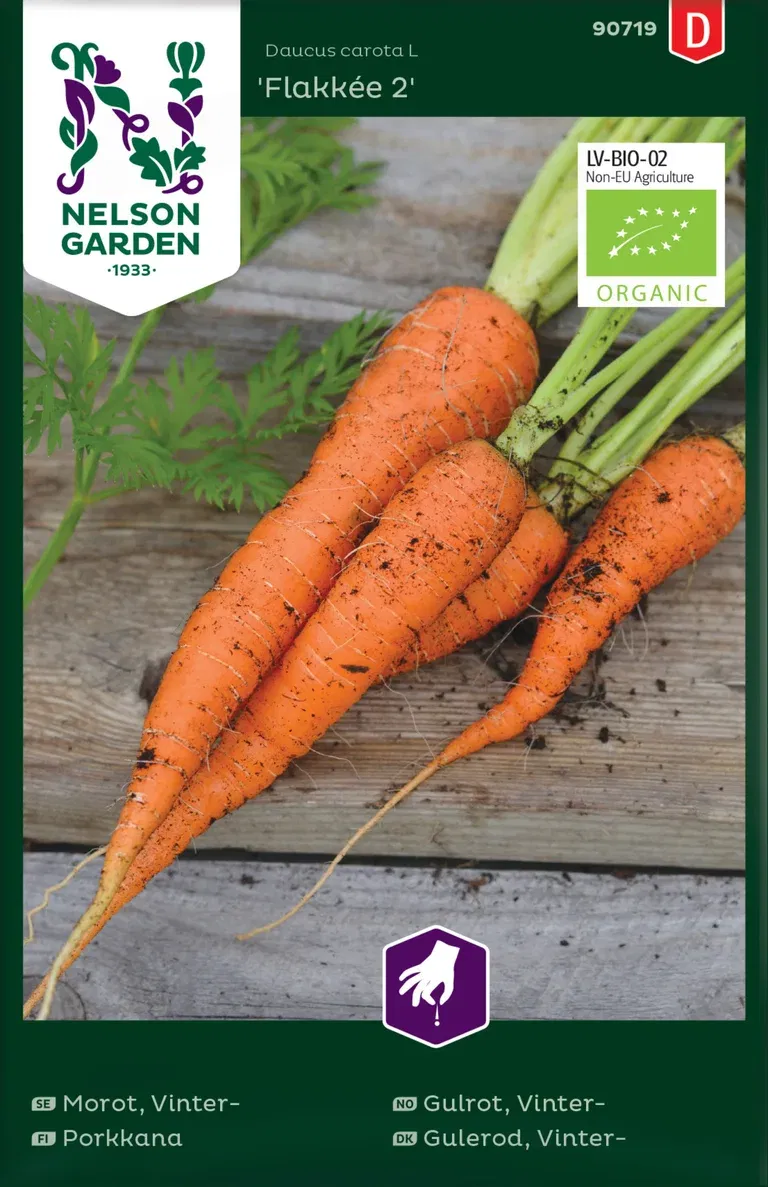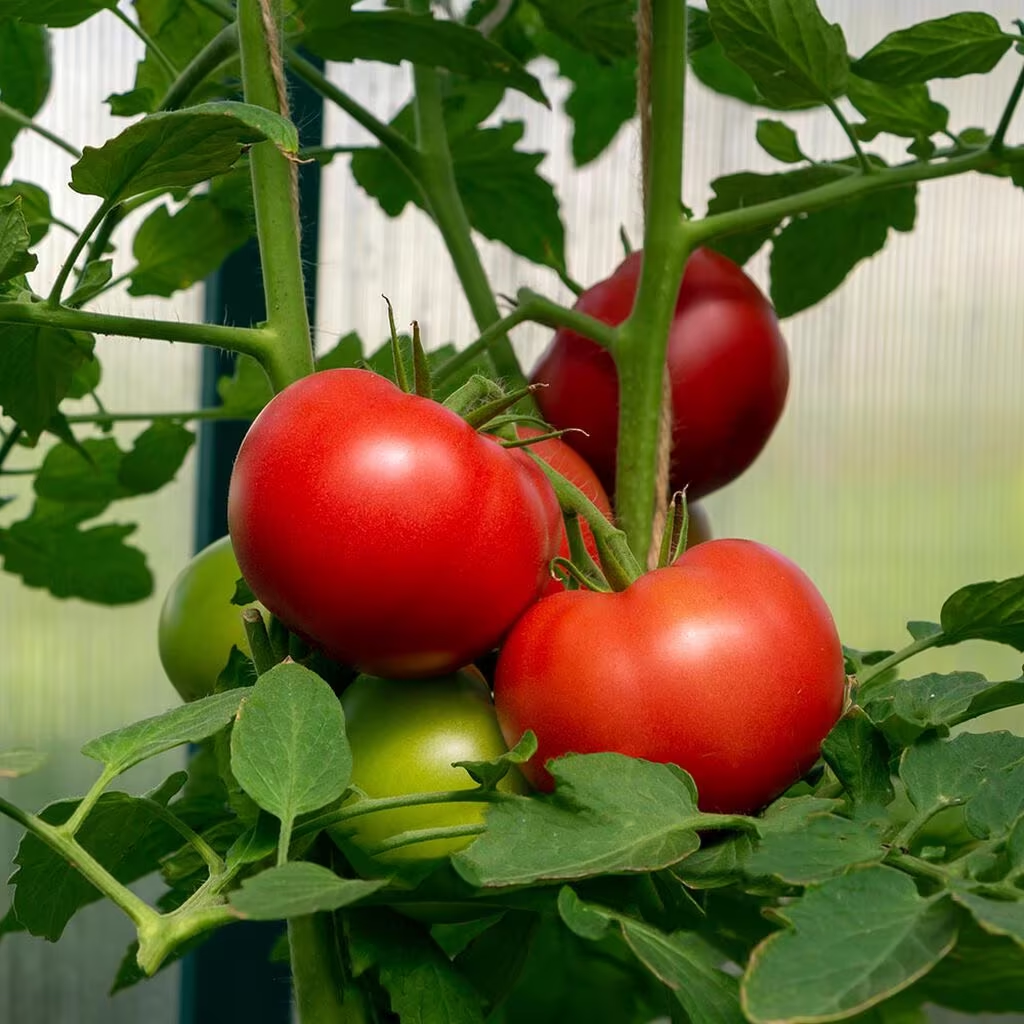Carrots – grow your own
Carrots are a root vegetable that we are very familiar with here in Norway. Not only do we use them for our own cooking, but they are also popular with both rodents and horses, and are often used as a treat or reward.

Scientific name (Latin): Daucus carota sativus
Family: Apiaceae
It is both easy and fun to have your own carrot garden at home. It is especially popular with children, as it gives quick and clear results – and not least, it is rewarding when the children get to help harvest the carrots themselves.
It is just as easy to grow directly in the garden as in a bed, or in a couple of buckets on the balcony, so no matter how you live, you can still grow carrots! Give the carrots the right conditions in terms of soil, surroundings and the right amount of water, and you will have a crop that you can hardly fail with.
How to grow in the garden, beds or on the balcony
- Sow
Start by soaking the carrot seeds in water for a day before sowing, to speed up the germination process, which can take 12-16 days. When the soil has thawed and the frost has broken, it is time to sow your carrot seeds. They need a germination temperature of around 9 °C - Soil
Whether you plant in the garden, in the bed or on the balcony, the carrot will need deep, nutritious soil to grow in, with a pH value of over 6.0. Plantasjen's herb and vegetable soil is excellent for this purpose. - Planting the seeds
Put the carrot seeds in a hole about 1 cm deep in the soil, and a distance of about 4 cm between the plants. The more even the hole you put the seeds in, the better the conditions for good growth – as otherwise there is a risk that they will start to sprout at different times, and therefore can be damaged when it is time to thin out. If you plant multiple rows, you must also leave a distance of 20–40 cm between them, to give the carrots proper space to grow. - Location
Preferably place the carrots in a location where they get plenty of sun, and preferably some wind and breeze if possible. This provides better protection against attacks from insect pests. - Watering
Water immediately upon planting, and then ensure that your carrot crop gets a steady supply of water during the growing season. However, be careful not to overwater, as this can lead to cracks in the taproot.
When can I harvest my carrots?
You can harvest carrots as they are ready, but of course it depends on the variety you have grown. If you want delicatessen carrots, it is best to harvest them a little earlier, while carrots that you plan to store over the winter should be harvested as late as possible. These should then be stored in moist sand, preferably in a basement if you have one – but otherwise another place that has the same type of climate as a basement is fine, i.e. dark, cool and preferably slightly damp.
Carrot care
Carrots do not require any dramatic measures when it comes to care – it is mainly about implementing the simplest and most commonly known advice. Give your carrots some time and care at regular intervals, to weed out weeds, thin out the plants a little and dig up the soil a little. Essentially, it is about the carrot not competing for light, water or space – and therefore you give the carrot the best conditions to grow big when they are free of weeds.
- Nutrition and fertilizer
Carrots do not require much nutrition, and do well without fertilization. But if you still want to give your crop that little bit extra, it is manure that carrots like best – although not fresh, as this often attracts carrot flies. - Watering
Carrot crops benefit from a steady supply of water. However, too much water leads to an increased risk of cracks in the root ball itself, so it's about finding a balance where you might prefer to water more often, in smaller amounts.
Prevent attacks from harmful insects
As for other insect pests, carrots are unfortunately popular with both carrot fly larvae and carrot aphids and budworms. The best way to prevent attacks is to cover the crop with non-woven fabric and to change the growing location every year. Growing together with other kitchen plants can also help.

The background and history of the carrot
In the countries around the Mediterranean, carrots were already cultivated over 2,000 years ago, while it arrived in Central Europe around the 14th century. Via the monasteries, the cultivated variety finally reached the Nordic countries, around the Middle Ages. But it was not yet the orange variety that we are most familiar with, but rather cultivated subspecies that had white, yellow, red or purple taproots. The orange subspecies first appeared in Holland in the 17th century.
Today, however, the orange carrot is the dominant color of the subspecies. Unlike the wild carrot, the carrot is not found in the wild. This easily cultivated root vegetable is one of the most important kitchen plants we have today, and thanks to the fact that it often yields a bountiful harvest, it is a cheap way to feed many people. It is hardy in several different climates, and is also easy to store – which also makes it a popular plant to grow – precisely because it gives a good return on a small investment. Carrots were grown around the 18th century here in Norway for commercial use, and the selection and assortment varies between small and neat delicacy carrots and larger, storage-friendly winter carrots.
Facts about carrots
- The carrot plant is a biennial.
- Blooms between July and August.
- The herb grows 30–80 cm tall.
- The fruit itself is called a pole root.
- Came to the Nordic countries during the Middle Ages.
- In Norway, we eat an average of 9 kg of carrots per person per year.
- Rich in carotene, which is converted into vitamin A.
Read more:
You are here:














